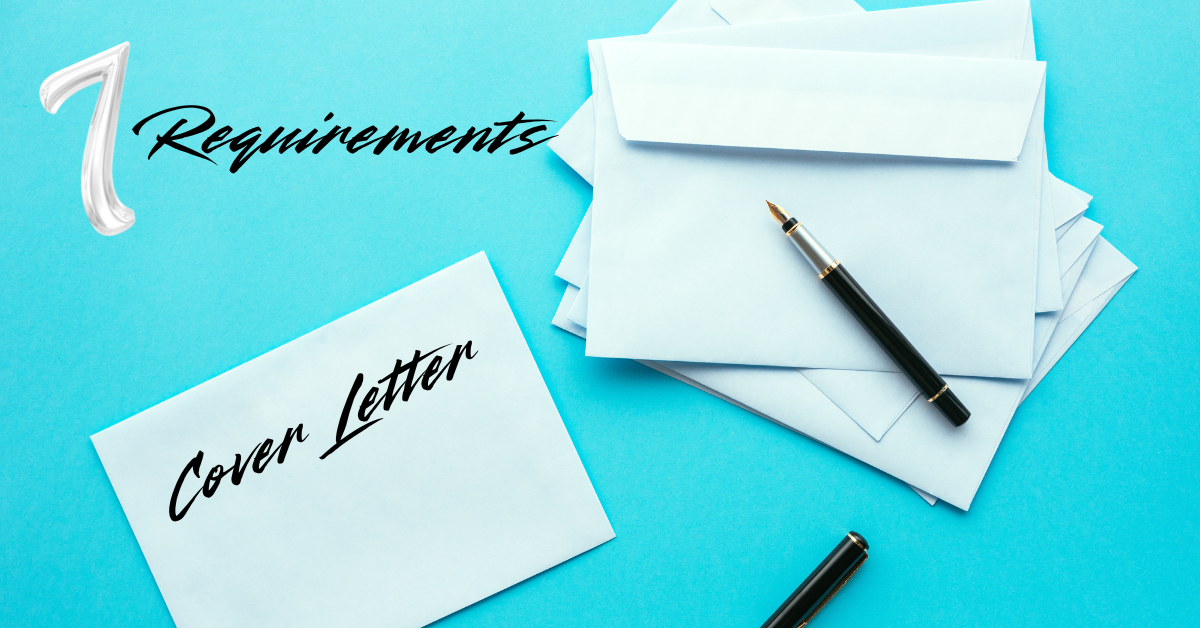Are you applying for a job that needs you to send a cover letter but you have no idea about it? No worries.
A well-written cover letter is your chance to make a strong impression on your employer. However, it will only be possible when you are familiar with the requirements of a cover letter. Employers or hiring managers receive numerous applications. Your goal should not only be sending an application but also attracting employers to give you an interview call.
In this guide, we will list the basic requirements for writing a cover letter that will help you secure the job you want.
Let’s get started!
What is a Cover Letter?
A cover letter is an official document to send with a job application. It consists of your skills, work experience and educational information. It is like a personalized introduction of yourself that you give to potential employers. While our resume company focuses in resume on your skills and experience, a cover letter provides deep insights and detail of your soft skills and attitude.
Employers ask for cover letters to examine if candidates align with the company’s culture and meet the job requirements. When your cover letter is professionally designed according to the requirements, it helps connect your career goals with the company’s values.
7 Basic Requirements of a Cover Letter
Creating a well-organized cover letter is extremely important to stand out. The requirements of cover letters may differ. However, there are some key elements or basic information that needs to be added anyway.
An effective cover letter requires a logical and consistent format to show your skills. By following the 7 basic requirements of a cover letter, you can meet employers’ expectations and highlight your expertise efficiently.
1_ Header
2_ Greeting
3_ Introduction
4_ Qualifications
5_ Values and Goals
6_ Call to Action
7_ Signature
Moving on to the detailed information!
1_ Header
Start your cover letter with a header. It generally includes your contact information. Many applicants use the same header for their resumes and cover letters for better consistency. However, you must understand the difference between cover letter and resume.
Header is include in the 7 Basic Requirements of a Cover Letter, In the header, you can add your email ID, name, phone number and address. Add all of these details on separate lines. Moreover, you can add links to your portfolio or social media profiles if they are relevant to the job you’re applying for.
2_ Greeting
Address the employer in a way that will make you stand out for the job position. The greeting or salutation is a key element that makes you the correct person in the eyes of employers. For this, you must research the hiring manager’s details such as his/her name. You may find these details in the job listing, on the company’s website. You can also contact the company directly to get this information. It will show your effort and attention to detail.
3_ Introduction
This is the opening paragraph or the introduction of your cover letter should introduce yourself clearly and align with the requirements of a cover letter. It should explain the reason for your interest in the job position. You can mention the job title, list relevant skills, and highlight why you are a good fit for the role. If someone referred you to the job, you can also include that in your cover letter.
Use this paragraph to show how you fulfill the job requirements. You must review the job posting to identify the qualifications. This introduction part helps the hiring managers see and examine you quickly.
4_ Qualifications
In the 7 Basic Requirements of a Cover Letter blog, we are going to discuss the qualification.
This part focuses on your qualifications and work experience. It must attract the employer’s attention immediately by stating your skills and how you will contribute to their company.
Focus on your skills and expertise and how they are relevant to or align with the job requirements. For this, you can share the projects you have worked on. It should show how you tackle the challenges and deliver the desired results. You can also highlight your contributions in past initiatives and impact to your work.
5_ Values and Goals
In this section, state that you have done a thorough research on the company and understand its ambitions. Highlight your goals that should align with the company’s goals. It should focus on your excitement about this job opportunity.
6_ Call to Action
In the final paragraph put the full basic requirements of a cover letter, summarize your interest in the position and suggest the next steps. Thank the hiring manager for examining your application. Express your enthusiasm for discussing the role further or scheduling an interview. Keep the focus on how your skills and experience can benefit the company, highlighting the value you can bring to their team.
This is the final paragraph that consists of a summary of your interest in the job position. You may thank the hiring manager for reviewing your application and take the time to invite you for the job interview.
7_ Signature
End your cover letter by signing off in a professional manner. Add your name and the signature. Don’t add any extra email signatures if you’re sending your cover letter through email.
You may use the following phrase to conclude your cover letter:
- Sincerely
- Best regards
- Respectfully
- Thank you
Wrapping Up!
Examining and fulfilling all the basic requirements of a cover letter will help you secure your dream job. The main purpose of writing a cover letter is to describe your professional journey in a way that attracts potential employers.
If you’re looking for a professional writer to prepare a well-structured cover letter for you, contact us now!

